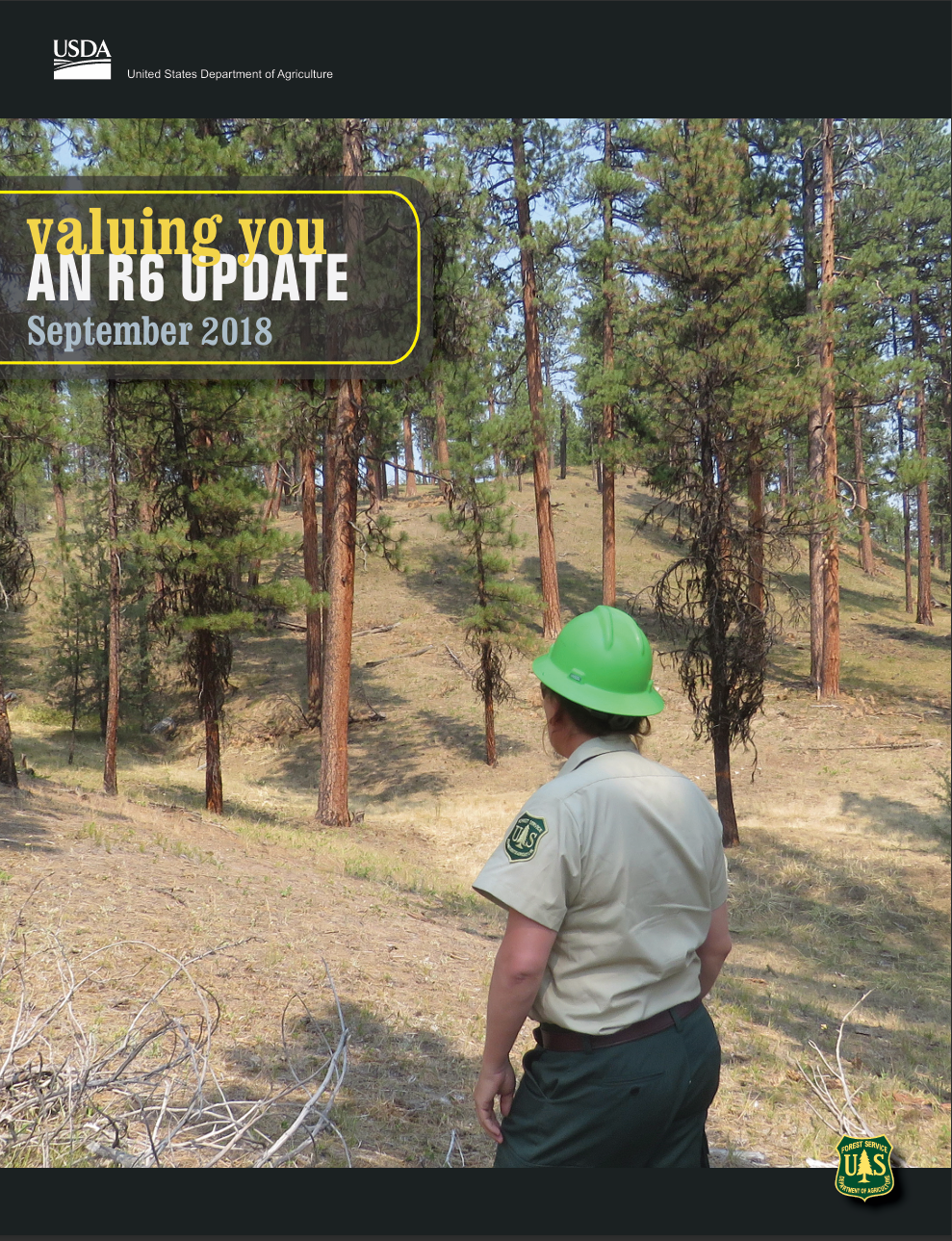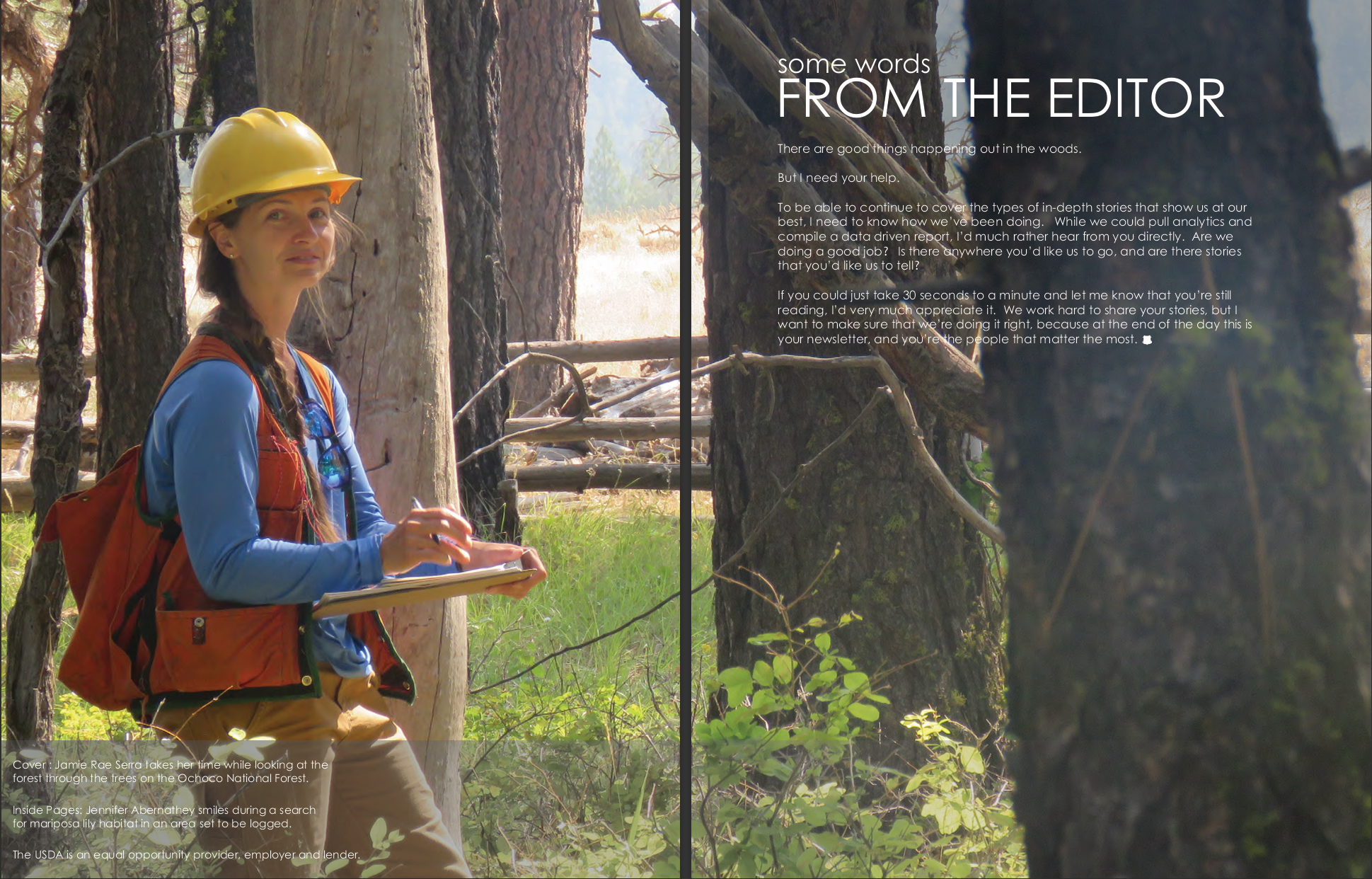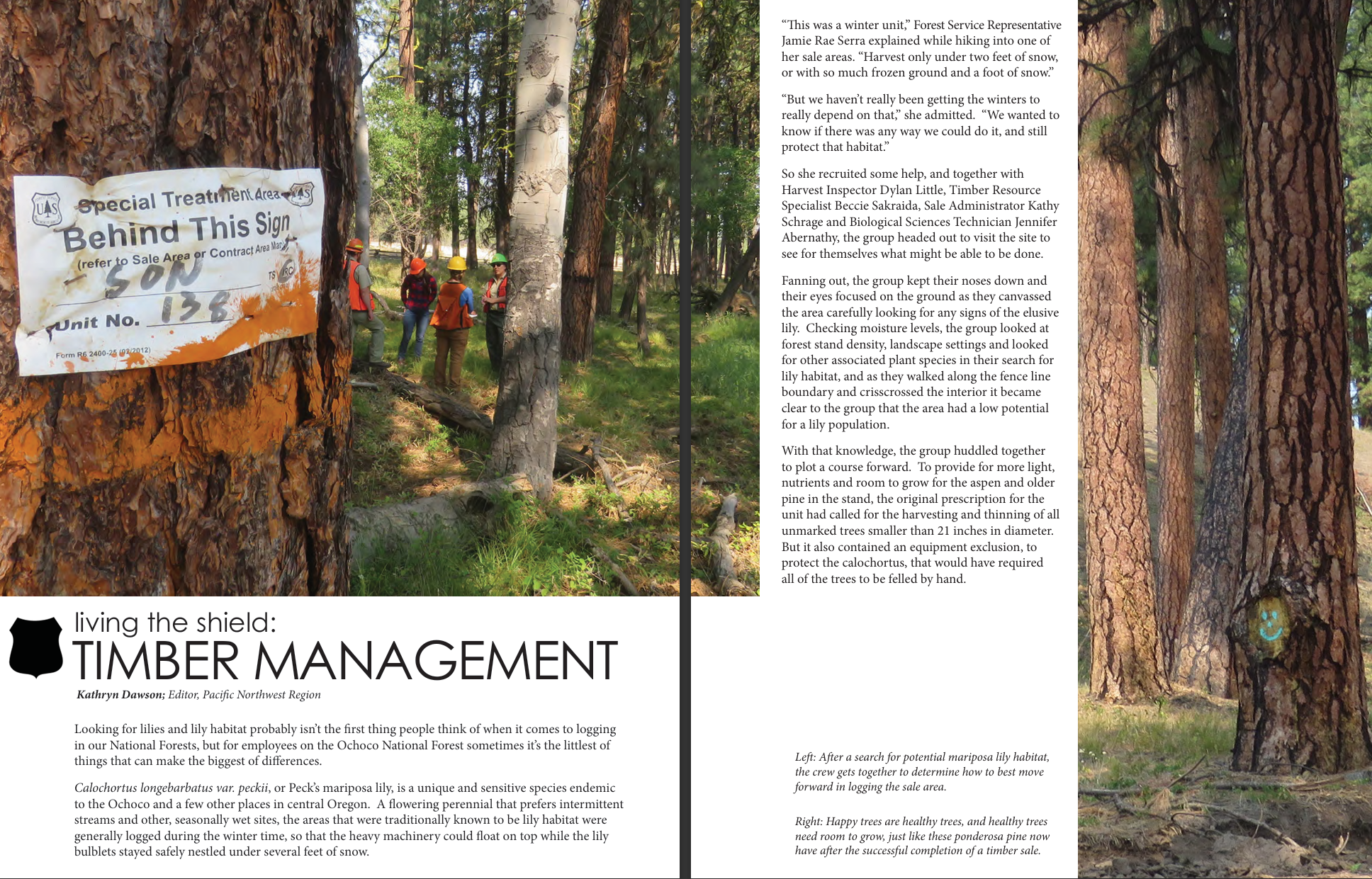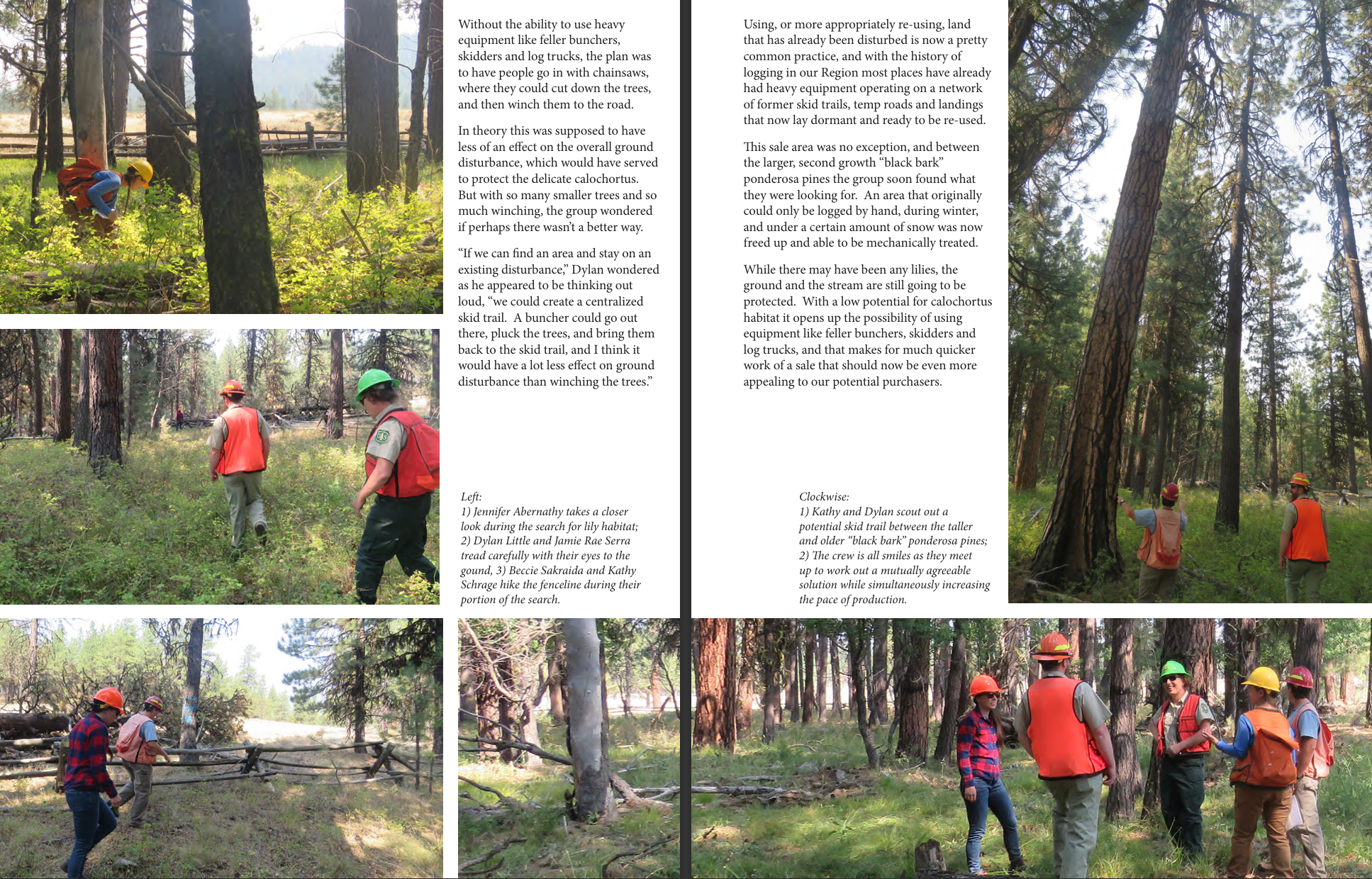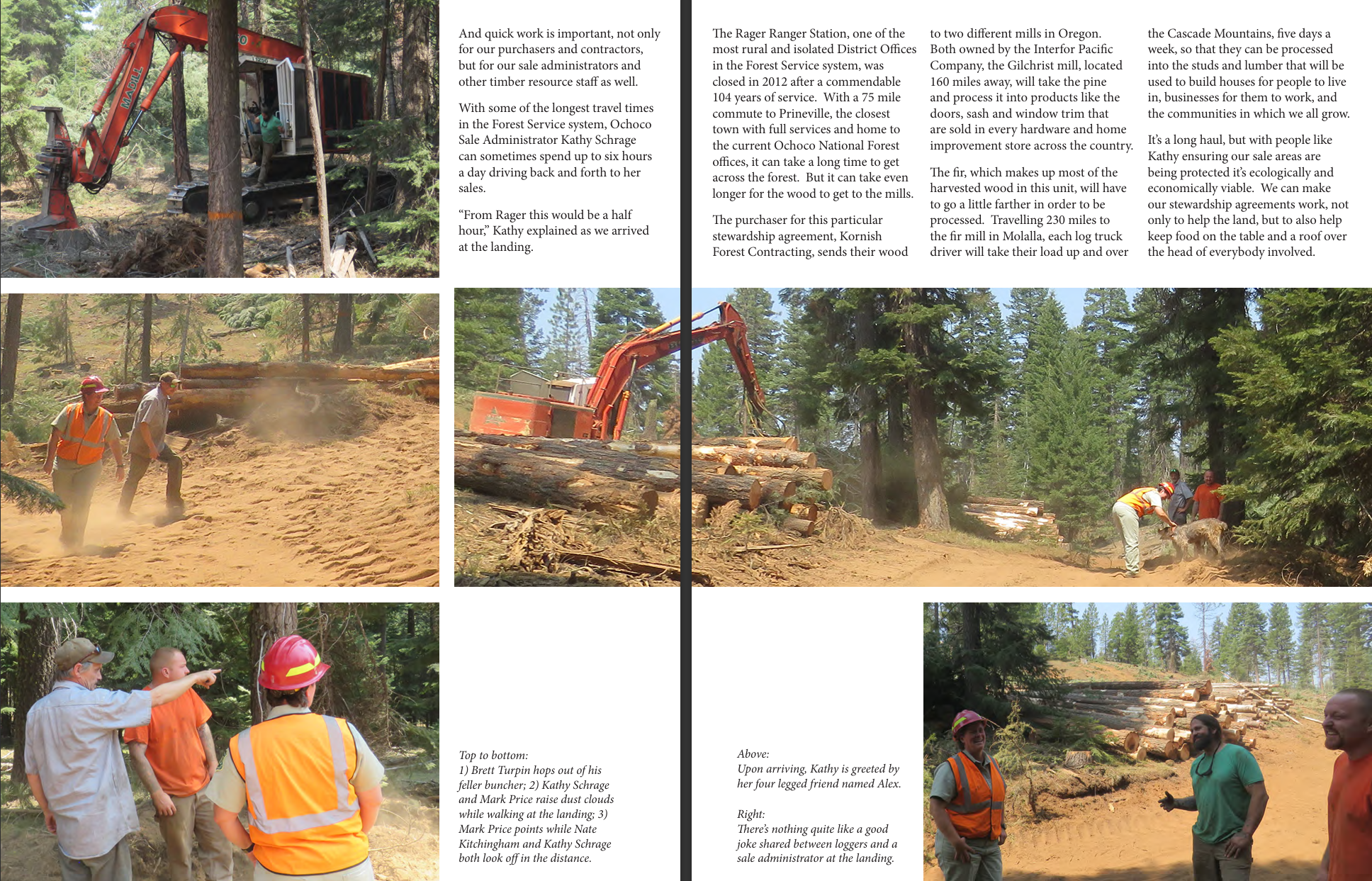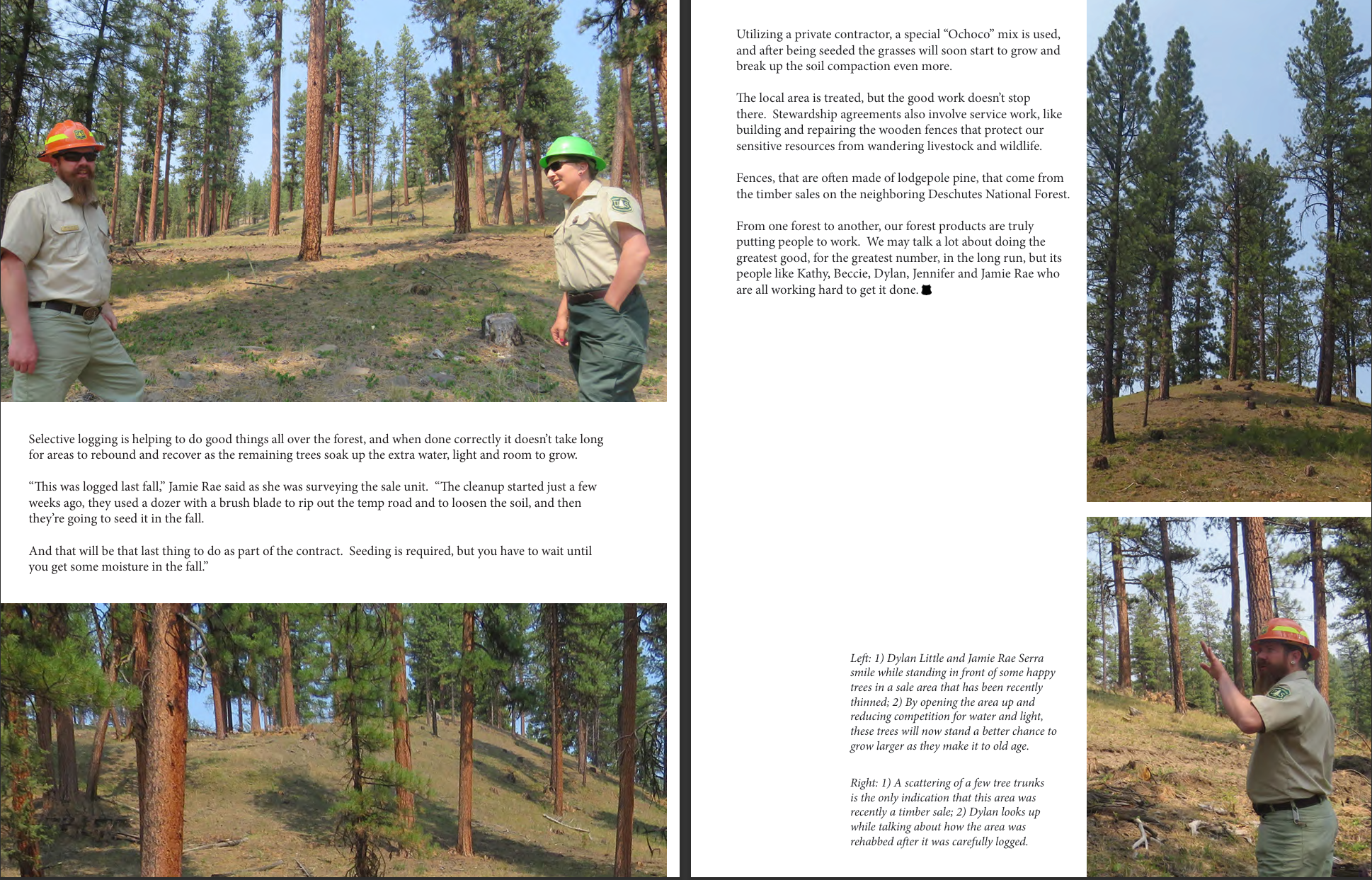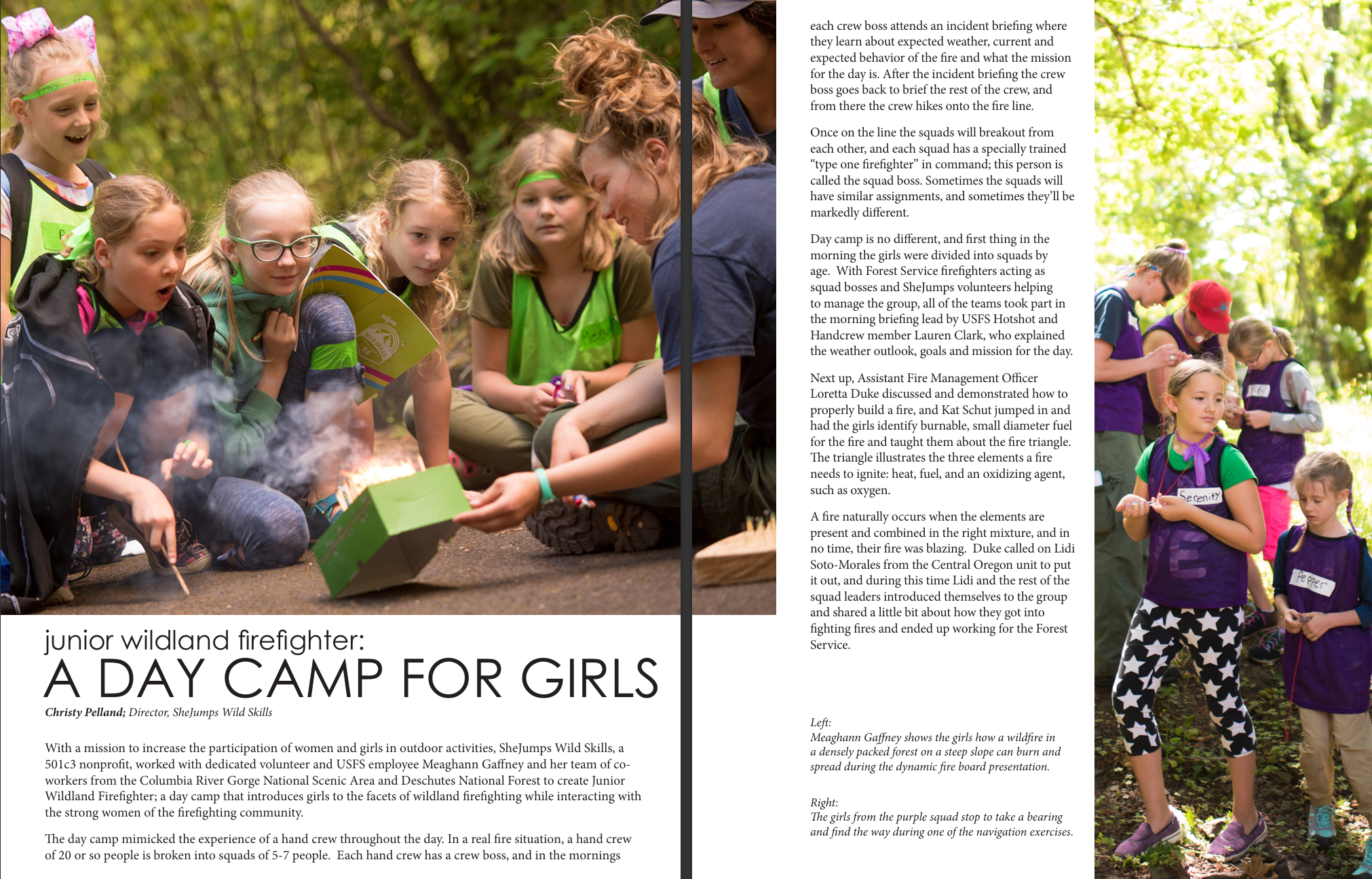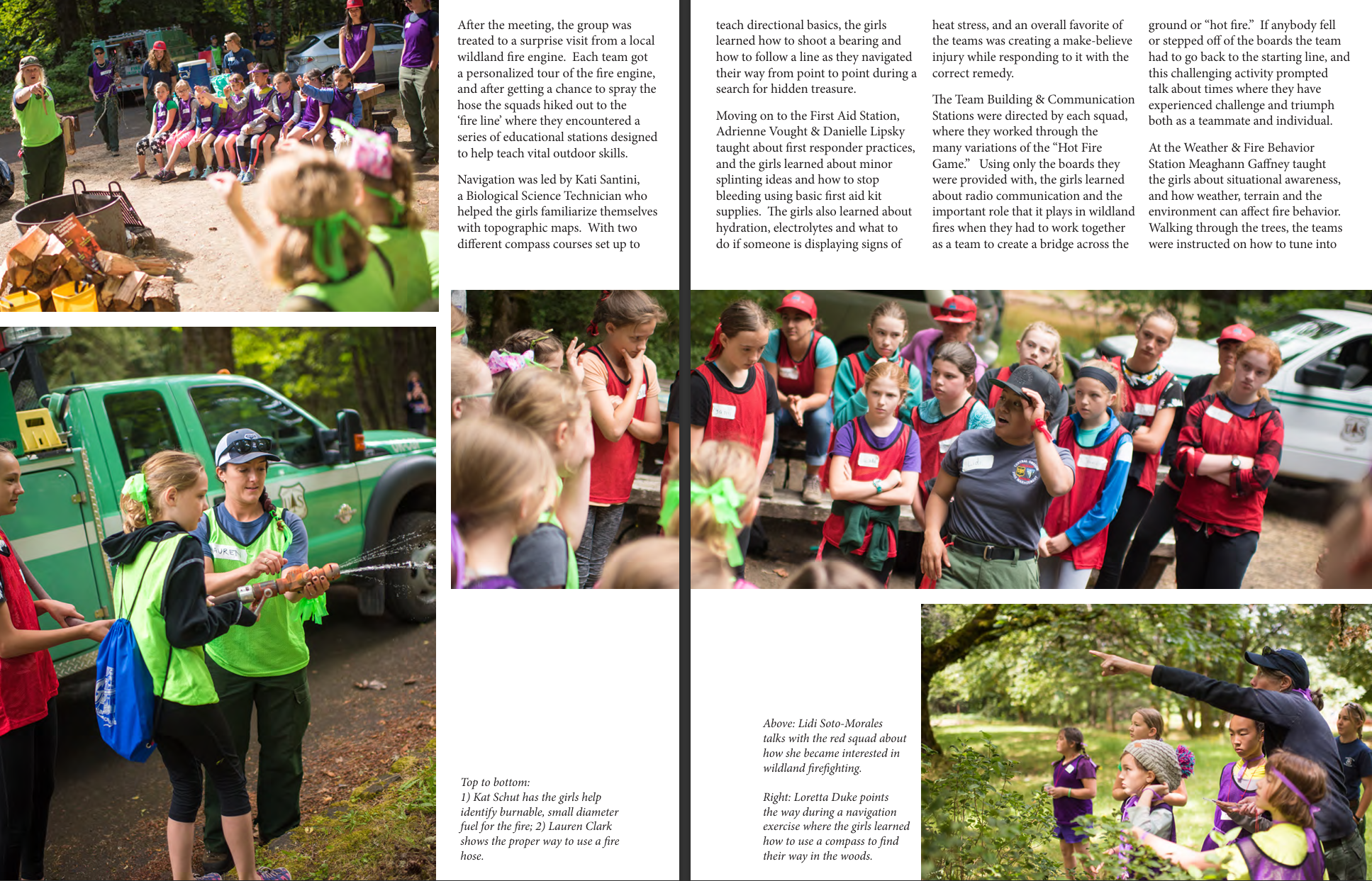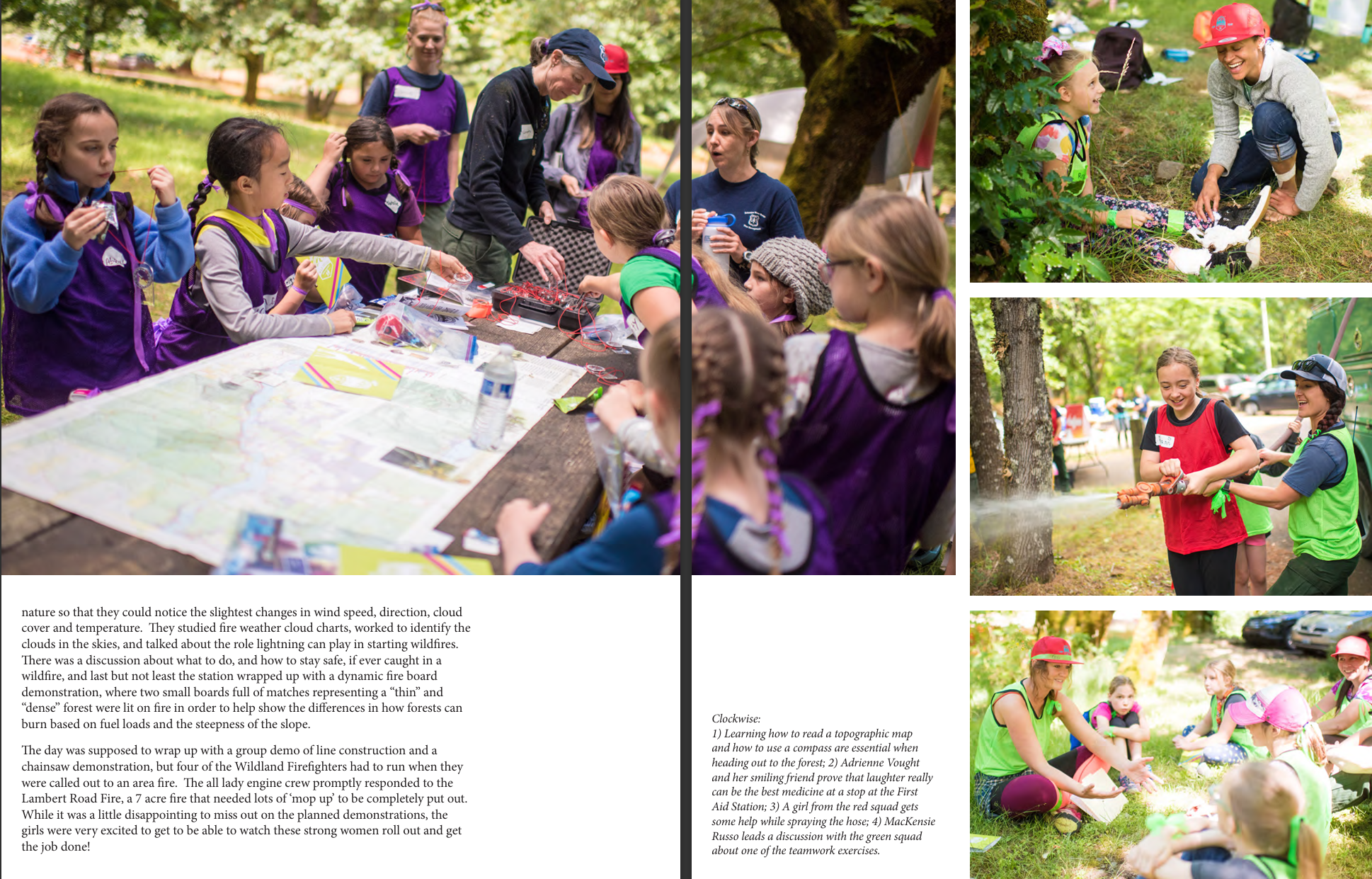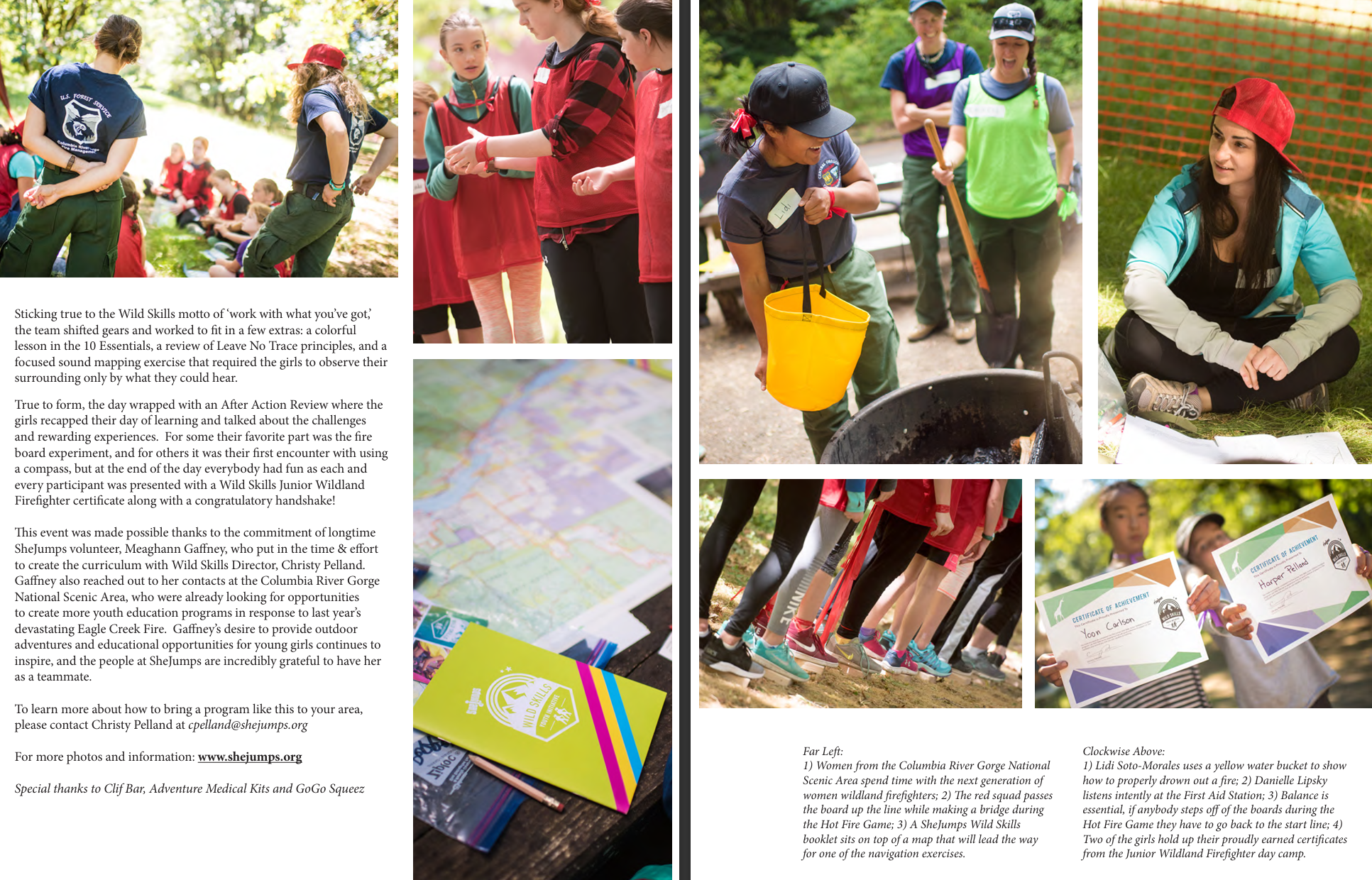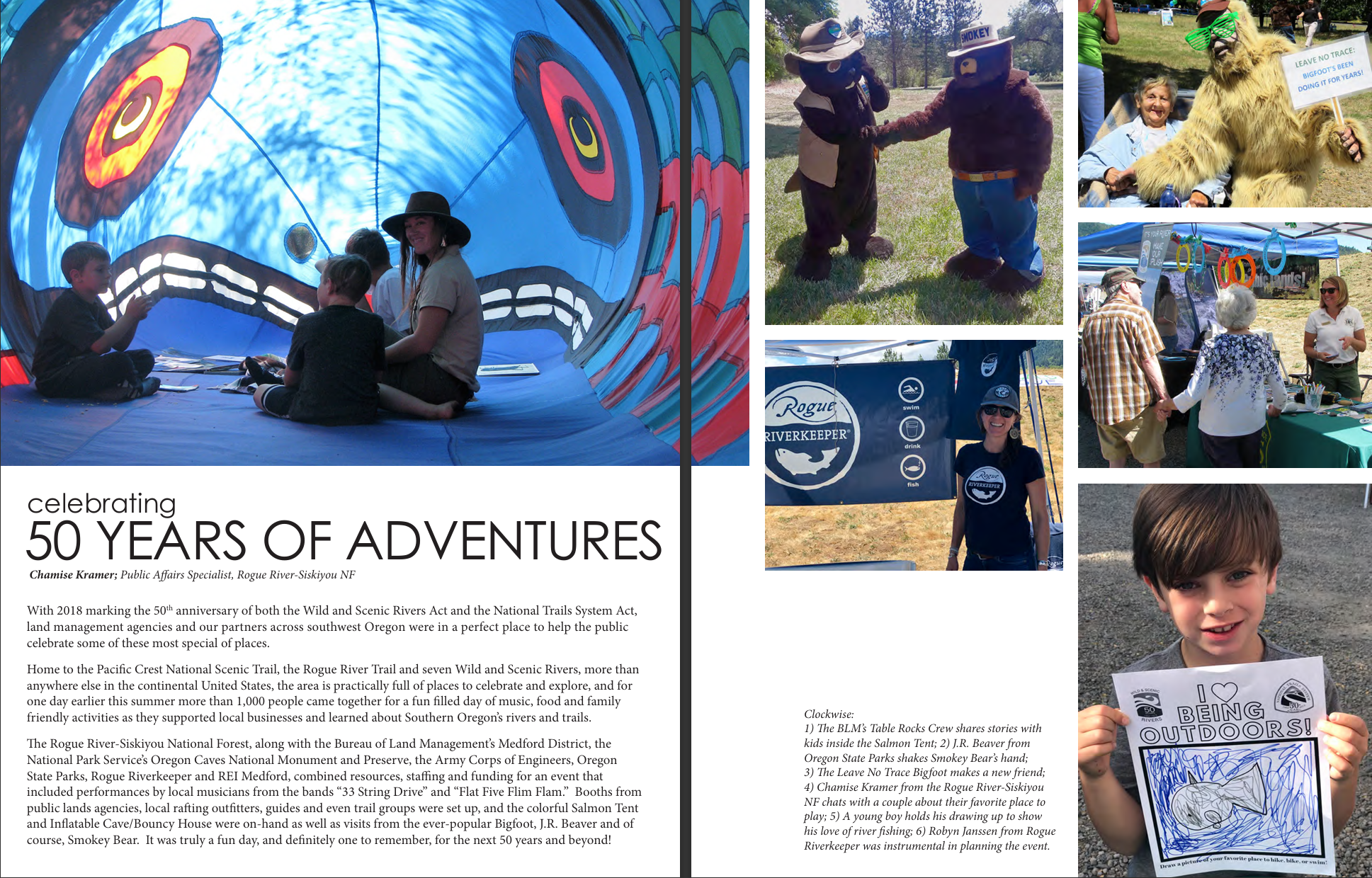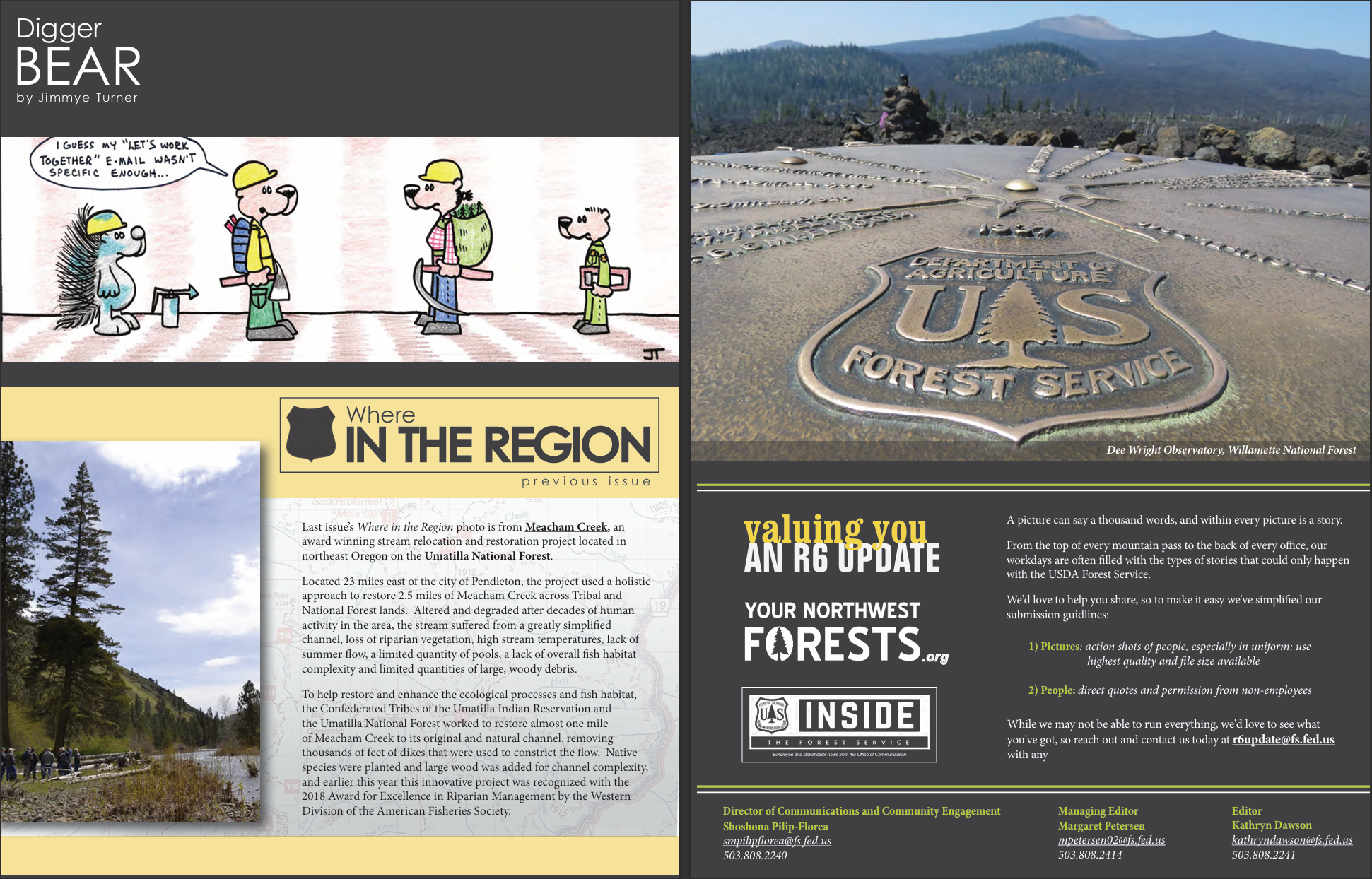Living the Shield: Timber Management
Background: This was another feature story, in a publication that was primarily designed for Forest Service employees across the Pacific Northwest. For this project I was editor of said publication, and in addition to providing layout I also was the source of this story idea. I planned the on-site visit, conducted the interviews and took the photos. And then I put it all together and crafted a package that was seen by over 4,000 people. All of whom came from a variety of different education levels and backgrounds.
